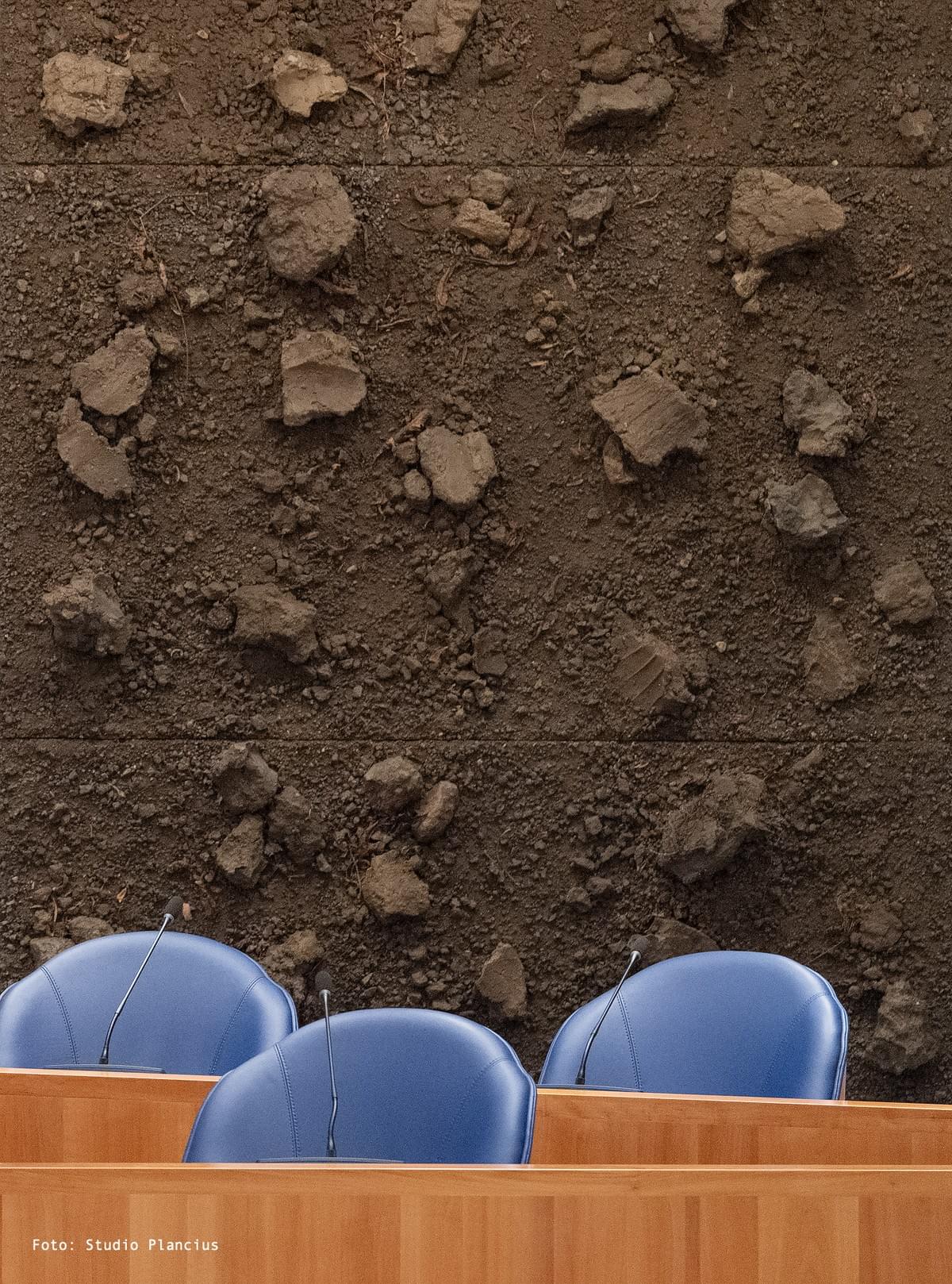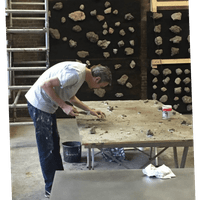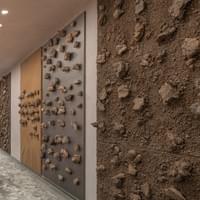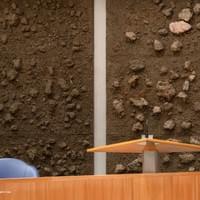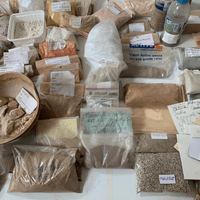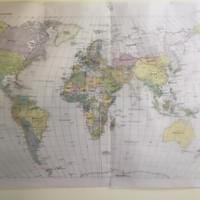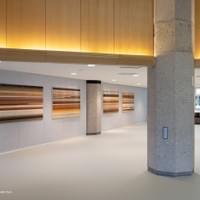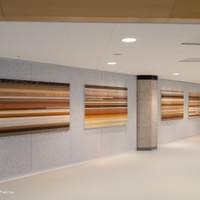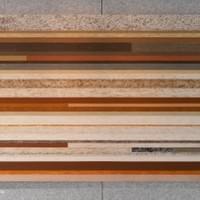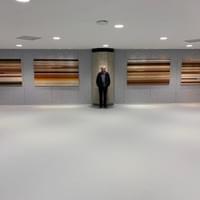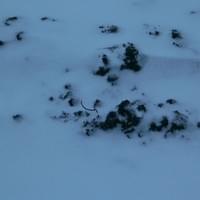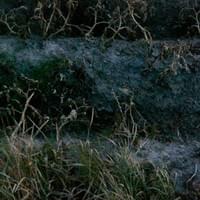
Visual Arts
Aarde / Landschappen / Zeeland Soil / Landscapes / Passers-by / The shot
Hoeders van het Land
Group show at Kunstenlab, Deventer (NL)
18.11.2023 - 7.01.2024
With: Ster Borgman, Lonnie van Brummelen & Siebren de Haan, Ivna Esajas, Nour-Eddine Jarram, Bart Lunenburg, Jos de Putter, Bita Razavi en Eva van Wenum
Guardians of the Land: a group exhibition about stories embedded in the rural landscape. Starting from the meadows around Deventer and its farms, and extending through Usselo and Stroe to Urk, Aalsmeer, Zeeuws-Vlaanderen, and Indonesia, nine artists in Hoeders van het land reflect on the ongoing cultural power struggle in and around the Dutch countryside. The focus is on the people who inhabit and cultivate this farmland, or who have done so in the past.
Een groepstentoonstelling over verhalen die opgeslagen liggen in het boerenlandschap. Vertrekkend vanuit de weilanden rondom Deventer en haar boerderijen, via Usselo en Stroe naar Urk, Aalsmeer, Zeeuws-Vlaanderen en Indonesië reflecteren negen kunstenaars in Hoeders van het land op de voortdurende culturele machtsstrijd op en rond het Nederlandse platteland. Er wordt ingezoomd op de mensen die deze landbouwgrond bewonen, bewerken of dat in het verleden hebben gedaan.

Aarde, 2023, 150x178cm, Piezo print on 3mm Bubont. Photography by Harm van den Berg / Studio Plancius

Aarde (Earth)
(2021)


The work of art in the temporary housing of the House of Representatives in the plenary room, with the name Earth, is a literal, concrete, organic, Dutch landscape made of clods, clay, and sand. The design elaborates on the look and feel of the plenary room of the House of Representatives at the Binnenhof (described by architect Pi de Bruijn as a "Dutch landscape"). The artwork consists of five vertical panels (3.60m by 2m) that put the "earth" upright in the parliament; the earth as a wall and precisely on this back wall an attentive spectator, in the standing position of a "conversation partner".
The panels are made of different types of Dutch marine and river clay from different locations and provinces. The panels are first and foremost an invitation to see the earth again, as it were. The installation is in the tradition of the Dutch landscape in the visual arts and fits in with the trend of revaluing organic and "poor" material in art practice.
The "wall of earth" also refers to Greek theater, following the design by Pi de Bruijn; the seats are grouped in a semicircle and, just like in a Greek theater, there is now a view of "the country" behind the stage where the political spectacle takes place.
The installation was created in collaboration with designer Frits van Hartingsveldt and visual artist Harm van den Berg.
Het kunstwerk in de plenaire zaal tijdelijke behuizing Tweede Kamer met de naam ‘Aarde‘ is een letterlijk, concreet, organisch, Hollands landschap: gemaakt van kluiten, klei en zand. Het ontwerp borduurt voort op de 'look & feel' van de plenaire zaal van de Tweede Kamer aan het Binnenhof (door architect Pi de Bruijn omschreven als een ‘Hollands landschap’).
Het kunstwerk bestaat uit vijf verticale panelen (3.60m bij 2m). De panelen zetten de ‘aarde’ dus rechtop in het parlement; de aarde als wand en juist op deze achterwand dus een aandachtige toeschouwer, in de staande positie van een ‘gesprekspartner’. De panelen zijn gemaakt van verschillende soorten Nederlandse zee- en rivierklei, afkomstig van verschillende locaties en provincies. De panelen zijn eerst en vooral een uitnodiging om de aarde als het ware opnieuw te zien.
De installatie staat in de traditie van het Hollands landschap in de beeldende kunst en past in de trend van herwaardering van organisch en ‘arm’ materiaal in de kunstpraktijk. De 'muur van aarde' refereert ook aan het Grieks theater, in navolging van het zaalontwerp van Pi de Bruijn; de stoelen staan in een halve kring gegroepeerd en net als in een Grieks theater is er nu achter de bühne, waar het politieke schouwspel zich afspeelt, zicht op 'het land'.
De uitvoering van de installatie is tot stand gekomen in samenwerking met Frits van Hartingsveldt (vormgever) en Harm van den Berg (beeldend kunstenaar).


Landschappen (Landscapes)
(2021)
Artworks lobby plenary hall

The four panels at the messenger station near the plenary hall bear the name "Landscapes."
Just like the work in the plenary room, these panels invite you to look at the earth. The panels are made of sand from all over the world and are constructed as a world map. The upper strip on the left panel is sand from Alaska, while the lower strip on the right panel is sand from New Zealand. In between are the deserts, fertile soil, volcanic sand, the beds of rivers and lakes, the steppes, and valleys of the earth's surface. The whole runs from West to East and from North to South. The time zones are accentuated by the lighting design, which follows an astronomical clock. This earth has no boundaries other than the markings of the sand; it is the earth we share.
The sand comes from the collection of artist Elvira Wersche. The concept presented to the art committee of the House of Representatives was devised by Jos de Putter, and forms the basis for the implementation, a collaboration between Jos de Putter and Elvira Wersche. The lighting design was carried out by Paul Cremers.
De vier panelen bij het bodestation bij de plenaire zaal dragen de naam ‘Landschappen’.
Net als het werk in de plenaire zaal nodigen deze panelen uit om naar de aarde te kijken. De panelen zijn gemaakt van zand, afkomstig uit de hele wereld en zijn opgebouwd als wereldkaart. De bovenste strook op het linkerpaneel is van zand uit Alaska, de onderste strook van het rechterpaneel is zand uit Nieuw-Zeeland. Daar tussenin de woestijnen, vruchtbare aarde, vulkaanzand, de beddingen van rivieren en meren, de steppes en valleien van het aardoppervlak. Het geheel loopt van West naar Oost en van Noord naar Zuid. De tijdzones worden geaccentueerd door het lichtontwerp, dat een astronomische klok volgt. Deze aarde kent geen andere grenzen dan de markeringen van het zand - het is de aarde die wij delen.
Het zand is afkomstig uit de verzameling van kunstenares Elvira Wersche. Het concept dat is voorgelegd aan de kunstcommissie van de Tweede Kamer is bedacht door Jos de Putter, en vormt de basis voor de uitvoering, een samenwerking tussen Jos de Putter en Elvira Wersche. Het lichtontwerp is uitgevoerd door Paul Cremers.
Zeeland Soil / Zeeuwse Klei
(2013)

Year: 2013
Format: video tryptich (3x)
Runtime: 4hr 21min
What do you get when you aim the camera at a few square meters of clay for three continuous seasons? A surprising lot of things! Zeeland Soil focuses on the microcosm of a small surface area of no more than a few square meters. During a period of nine months, the camera was filming for one minute every day, starting an hour later every day. These still images, shown nonstop on three planes, have an almost hypnotic effect. With Zeeland Soil, Jos de Putter returns to the area in Zeeuws-Vlaanderen that he knows so well, 20 years after his documentary Het is een schone dag geweest (It has been a beautiful day).
Developed in collaboration with artist Harm van den Berg
Production: Wink de Putter / Dieptescherpte BV
Commissioned and acquired by Zeeuws Museum, Middelburg
Landscapes
(2017)

Landscapes / Landschappen
Jos de Putter about Landscapes:
"I am interested in presenting images that are fragile, or on the verge of disappearing. In the video installation Landscapes, I try to capture the look of people who have worked the land all of their lives: farmers and laborers stare into the camera, straight at us, with the fields in a shimmering background.
Usually, we, the public, are the spectator in a museum when we look at what is in front of us. In this video installation, I want the gaze to be reciprocal; the public is watching, but simultaneously has the feeling of being watched. In this way, I want to evoke the experience of a special meeting."
Developed in collaboration with artist Harm van den Berg
Research: Wink de Putter, Produced by Dieptescherpte BV
Commissioned and acquired by Zeeuws Museum, Middelburg
Passers-by
(2005)

Year: 2005
Format: 35 mm
Runtime: 7 min
In Passers-by, the viewer becomes aware of fragments of conversations in a variety of bus shelters in the deserted landscape of the Dutch province of Zeeland. The conversations seem to have been left behind after the travelers have moved on, and the bus shelters store tales about memories, love, and departure.
Research: Wink de Putter
Produced by Dieptescherpte BV
The shot
(2014)

Year: 2014
Format: HD video
Runtime: 16 min
The Shot is primarily based on an experience. We took our oldest daughter to a fairy-tale park at the age of 6. She knew she was going to ‘meet’ Snowwhite. She ran up the little hill, towards the little house where Snowwhite lay asleep. I will never forget the look in her eyes, the shattered myth, when she asked us: ‘is that Snowwhite?’ To me, it was a very profound moment, the first realisation of a gap between image and reality.
From that moment on, I knew I wanted to capture something similar in the eyes, the face of my youngest daughter. Of course, I knew Herz Frank’s Ten minutes older, and I did not want to copy, but the idea of watching the process of a face changing while looking at a film was for me the beginning of The Shot. Cameraman Jean Counet came with a technique through which it was possible to show the eyes looking directly into the camera, which increases the intimacy of what we see.
My daughter, 8 years old, is watching Bambi for the first time in her life. The Shot leads us towards the moment where Bambi’s mother is shot and my daughter realizes that there is an end to eternity.
Camera: Jean Counet
Feature documentaries
Mid-length
Television
Creative producer
Visual arts
Awards
Publications
News
Contact
Website
Webdesign
© 2017







